Putting Our Best Footwear Forward: Re-Discovering The Costume Institute's "Landmark" Shoe Collection
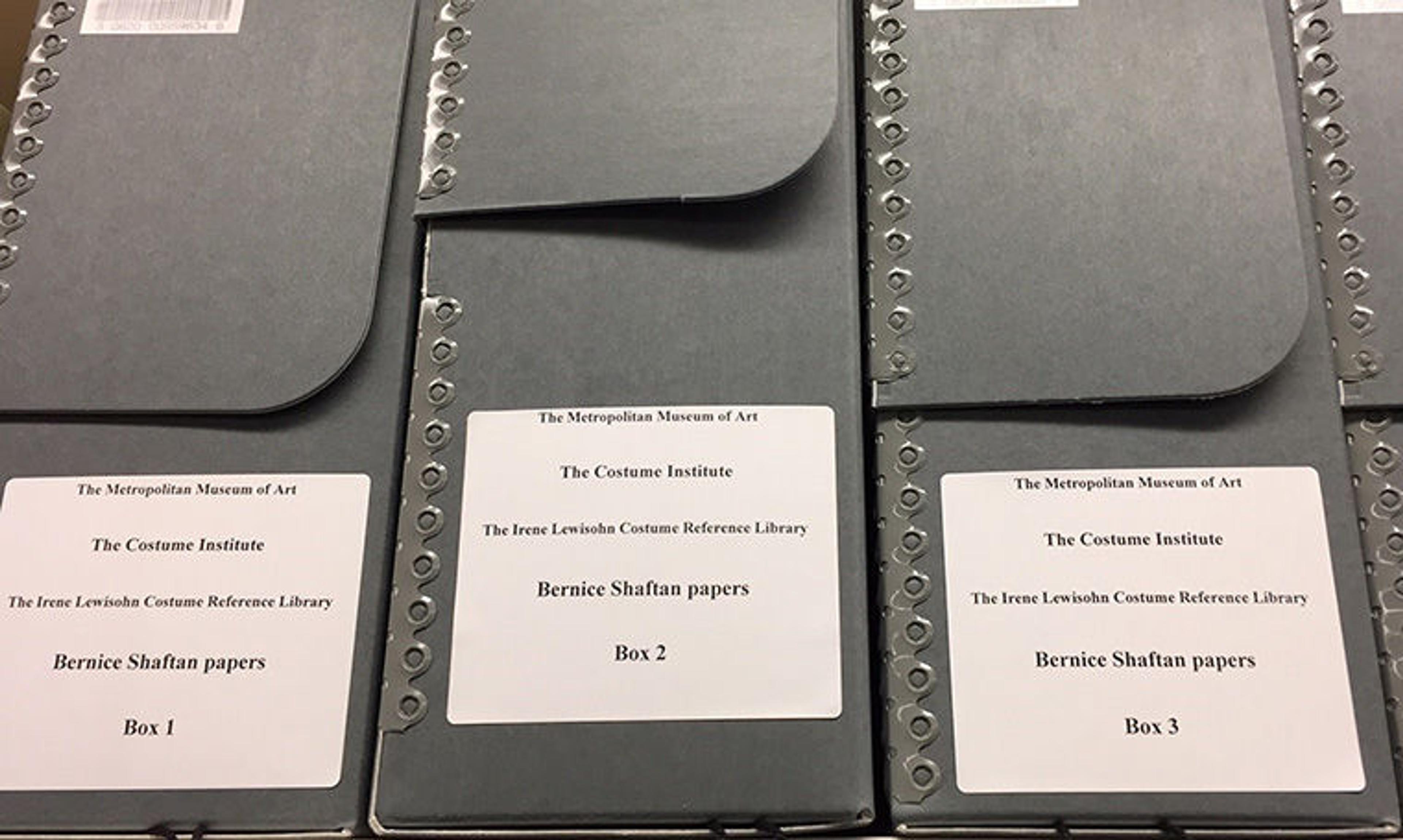
Materials from The Costume Institute Special Collections processing project, now open for research. Photo by the author
In 2017, I joined The Met as a project archivist in the Irene Lewisohn Costume Research Library of The Costume Institute to undertake a two-year project to arrange, describe, and provide access to twenty-three collections of archival materials. As an archivist processing collections on behalf of a curatorial department, I find that one unique value of my work is connecting paper (and sometimes digital) records with related objects in the Museum's collection.
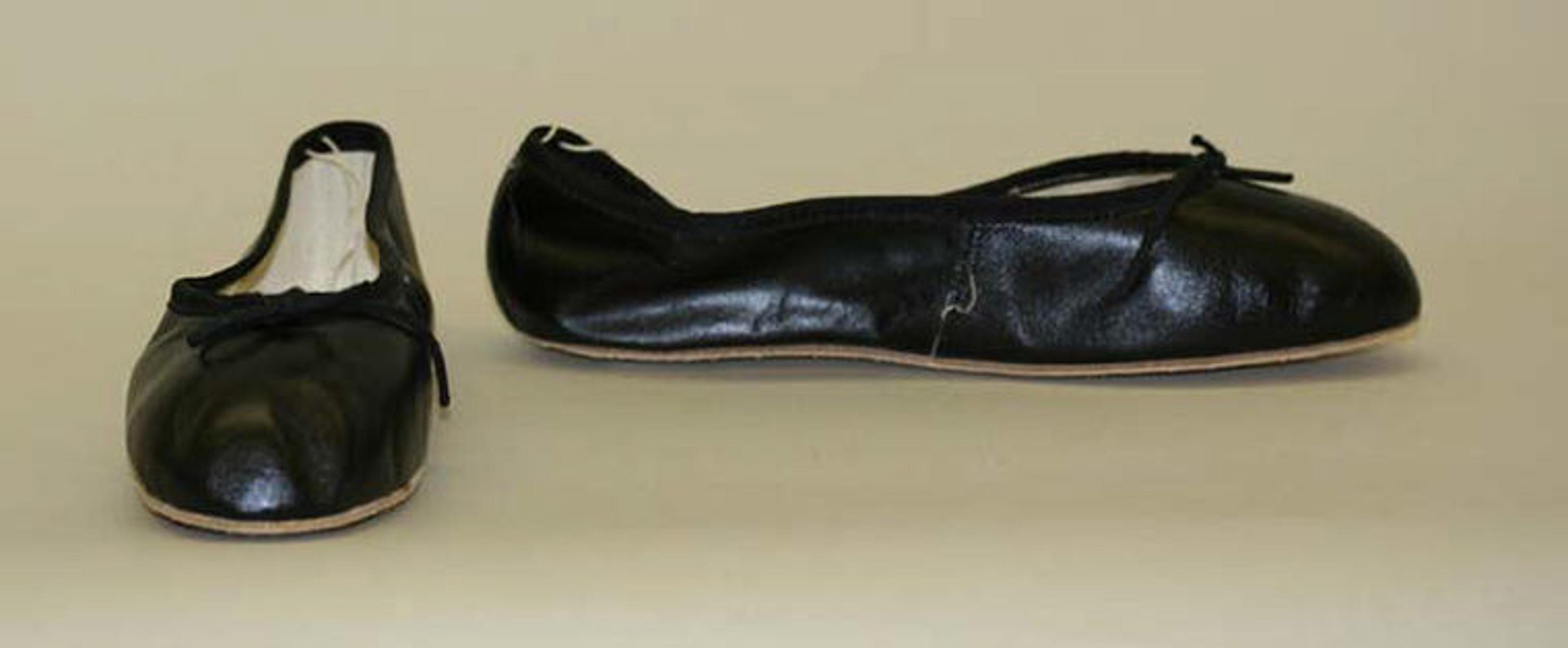
Capezio Inc. (American, founded 1887). Slippers, 20th century. Leather. The Metropolitan Museum of Art, Gift of Capezio Ballet Makers, 1973 (1973.223.1a, b)
I recently found an illuminating example of such a connection while processing the records of the twentieth-century shoe designer Bernice Shaftan, available for research in the Irene Lewisohn Costume Research Library of the Costume Institute.

Scholl, Inc. (American). Sandals, 1969. Leather, wood, rubber. The Metropolitan Museum of Art, Gift of Scholl, Inc., 1973 (1973.249a, b)
In the early 1970s, The Costume Institute at The Met received a series of donations of iconic contemporary shoes from American and European footwear manufacturers. The shoes provide a snapshot of 1970s silhouettes and styles, capturing a specific time in instantly recognizable items. Today, however, it is difficult to recognize that they were originally donated to The Met as a cohesive collection.

G. H. Bass & Co. (American). Moccasins, 1973. Leather. The Metropolitan Museum of Art, Gift of G. H. Bass & Co., 1973 (1973.217a, b)
Upon entering the Museum's collection, each pair of shoes was assigned a unique accession number and can be found in The Met collection online. The first four digits of an item's accession number tell us the year of its acquisition, but this alone doesn't provide any contextual information about the larger group as a whole.
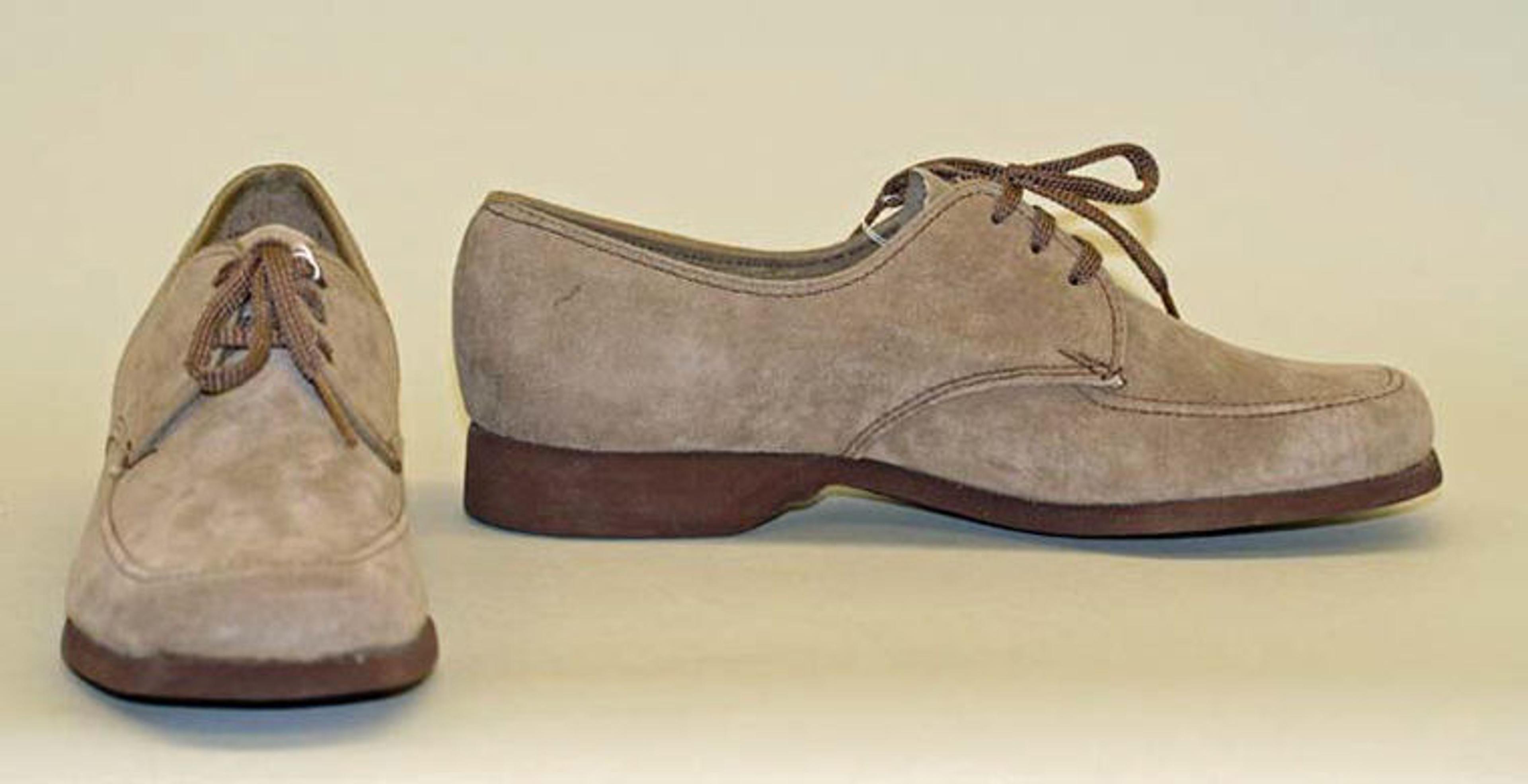
Wolverine World Wide (American). "Hush Puppies," 1963. Leather. The Metropolitan Museum of Art, Gift of Wolverine World Wide, Inc., 1973 (1973.255a, b)
In the Bernice Shaftan papers, I found an example of how archival records can provide additional context for such accessioned items in the Museum's collection. Shaftan's documents provided me with a first clue as to how these shoes came to the Museum as a group. The Costume Institute's departmental administrative records, and recollections of Barbara Levy, a footwear executive who coordinated the effort, provide additional information that allow us to tell the story more fully.
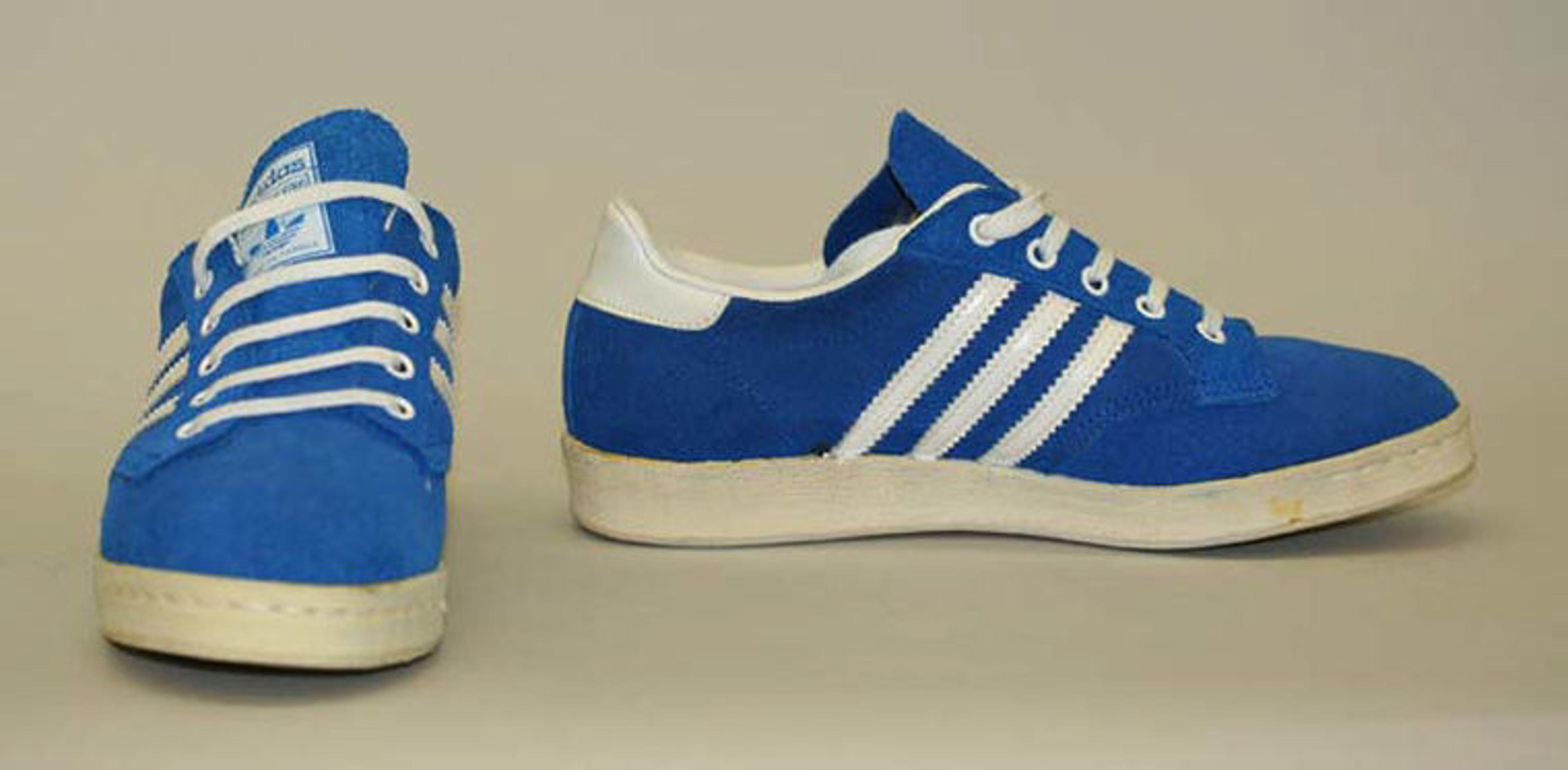
Adidas (German, founded 1949). Tennis shoes, 1972. Leather. The Metropolitan Museum of Art, Gift of Adidas-Libco, 1975 (1975.102a, b)
Levy served as President of Shoe Women Executives (later the Footwear & Accessories Council), a trade association that in 1973 launched an effort to have members donate a so-called Landmark Collection of significant shoes to The Costume Institute.

House of Charles Jourdan (French founded 1919). "Cavatine," 1973. The Metropolitan Museum of Art, Gift of Charles Jourdan, 1975 (1975.110a, b)
Shaftan's papers contained a survey that was sent to fellow organization members to select iconic designers and specific styles that would be appropriate for the donation, including many designs that are familiar to us today. Levy reach out to dozens of selected designers to secure examples of "landmark" footwear, the donation of which to the Costume Institute was timed to celebrate and publicize the twenty-fifth anniversary of Shoe Women Executives.
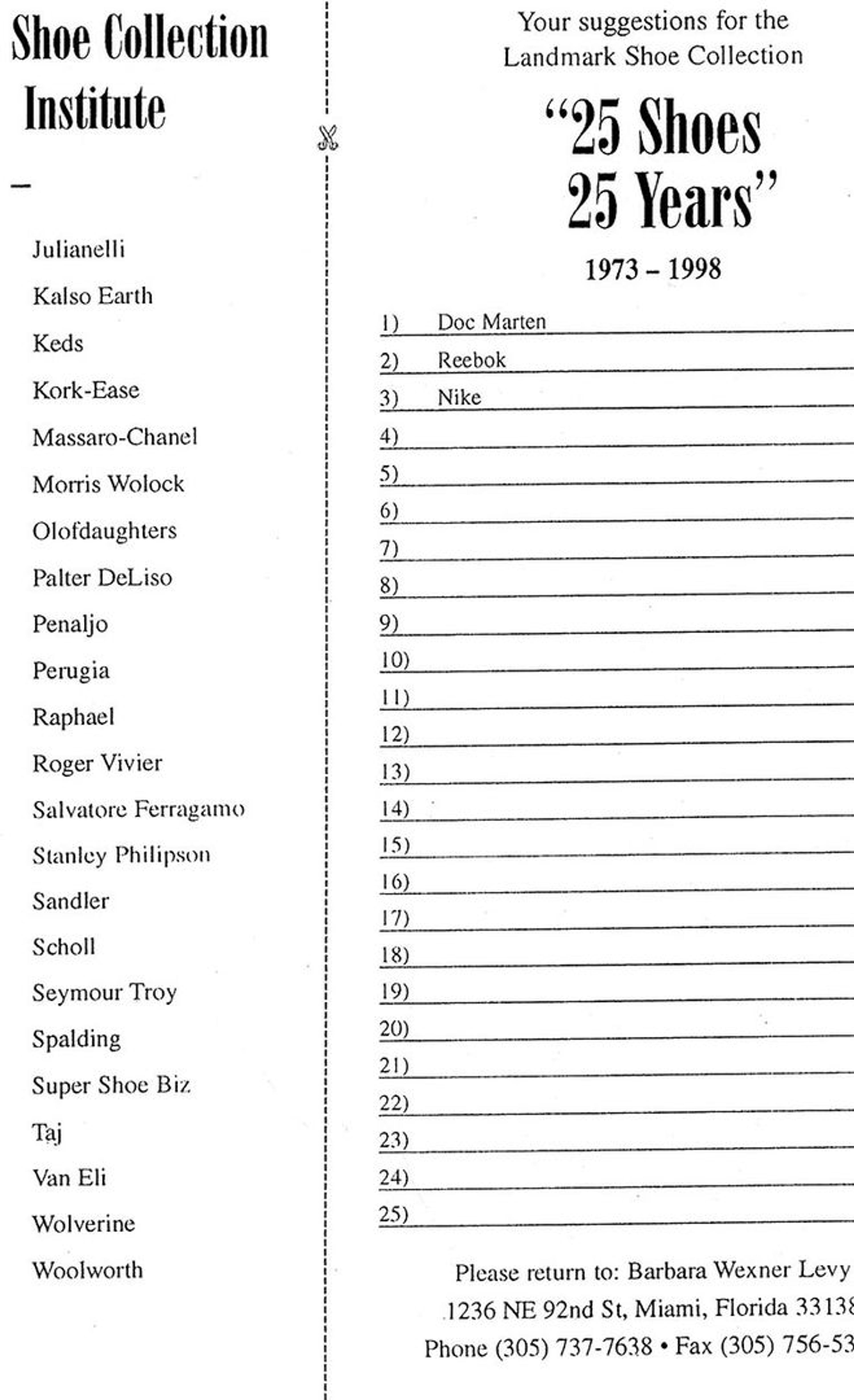
Footwear and Accessories Council. Correspondence, press, promotion. 1970s–1980s, box 6, folder 11, Bernice Shaftan papers, The Irene Lewisohn Costume Reference Library at The Costume Institute, The Metropolitan Museum of Art. Photo by the author
The original presentation of the collection to the Museum took place on August 7, 1973, at The Costume Institute. Included in the presentation were the examples shown throughout this article, as well as many others now in the Museum's collection.
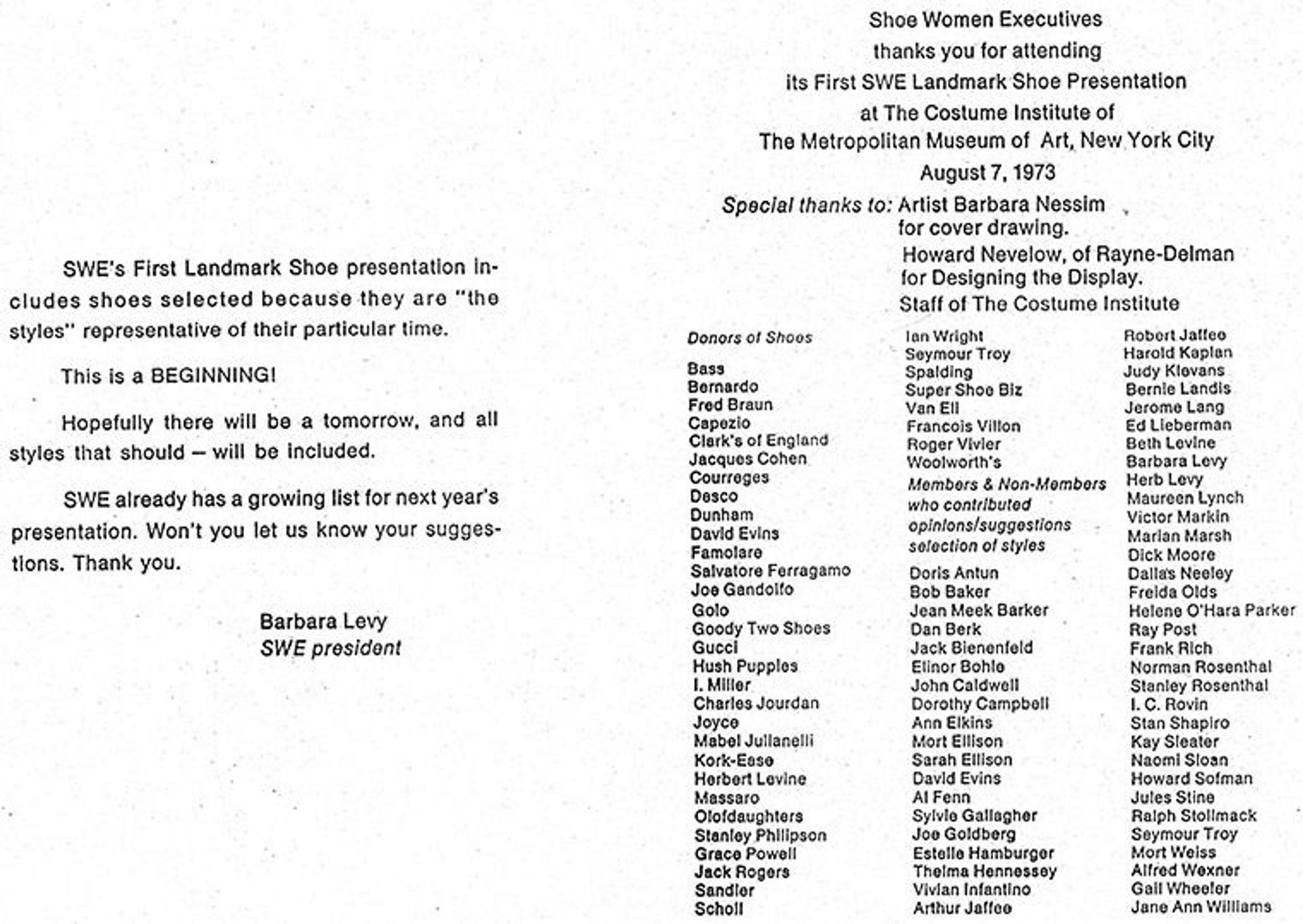
Footwear and Accessories Council. Correspondence, press, promotion. 1970s–1980s, box 6, folder 11, Bernice Shaftan papers, The Irene Lewisohn Costume Reference Library at The Costume Institute, The Metropolitan Museum of Art. Photo by the author
The display at that event, designed by Howard Nevelow of Rayne-Delman, showed the shoes in The Costume Institute gallery as if they'd just been unpacked as a commercial shipment.
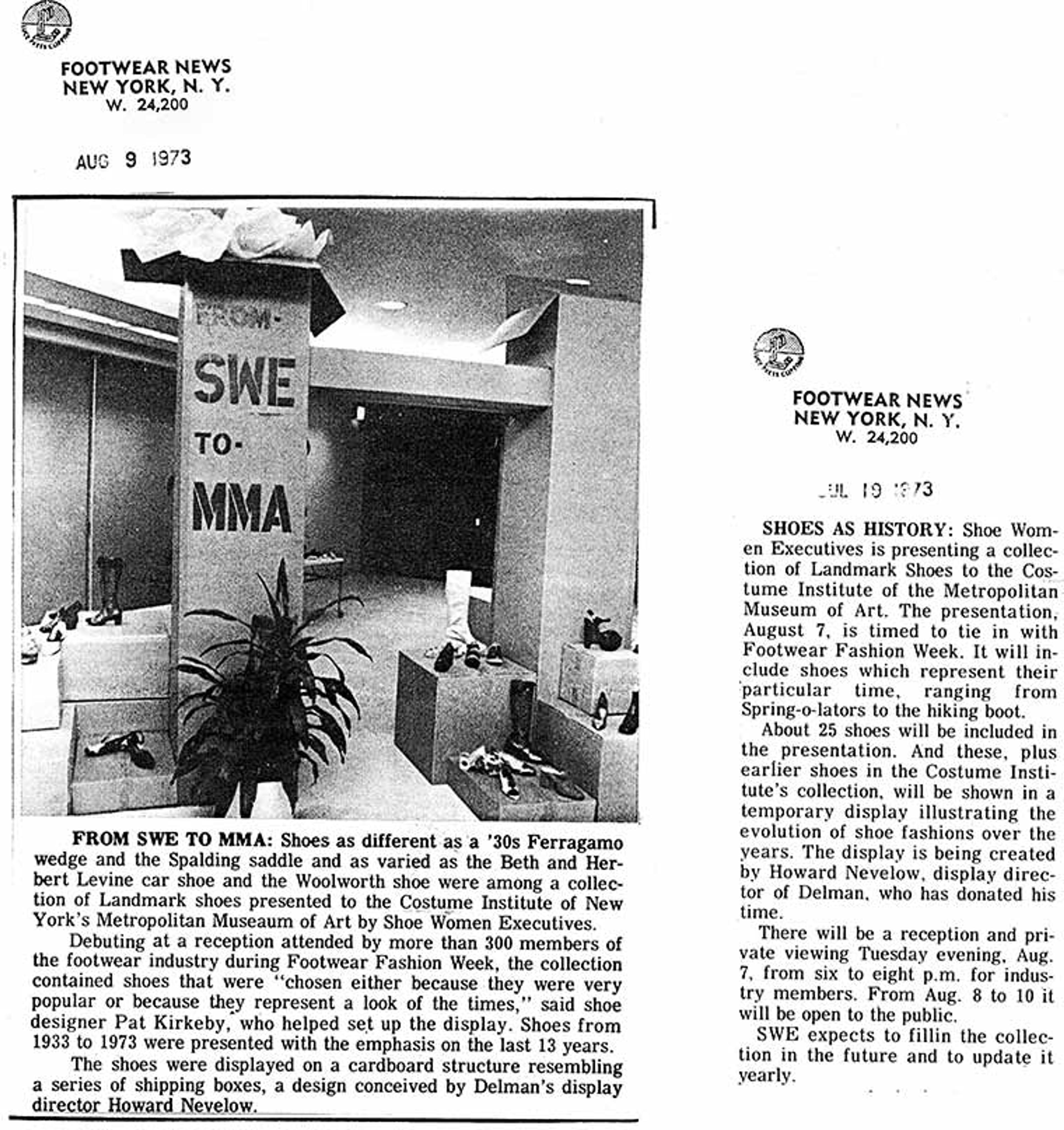
Collections received. Landmark Shoe Collection. Clippings. 1973, 1998, box 1 folder 1 , Costume Institute records, The Metropolitan Museum of Art Archives, New York. Photo by the author
Additional gifts from the organization were considered in 1974 and subsequently donated to The Costume Institute.

Footwear and Accessories Council. Correspondence, press, promotion. 1970s–1980s, box 6, folder 11, Bernice Shaftan papers, The Irene Lewisohn Costume Reference Library at The Costume Institute, The Metropolitan Museum of Art. Photo by the author
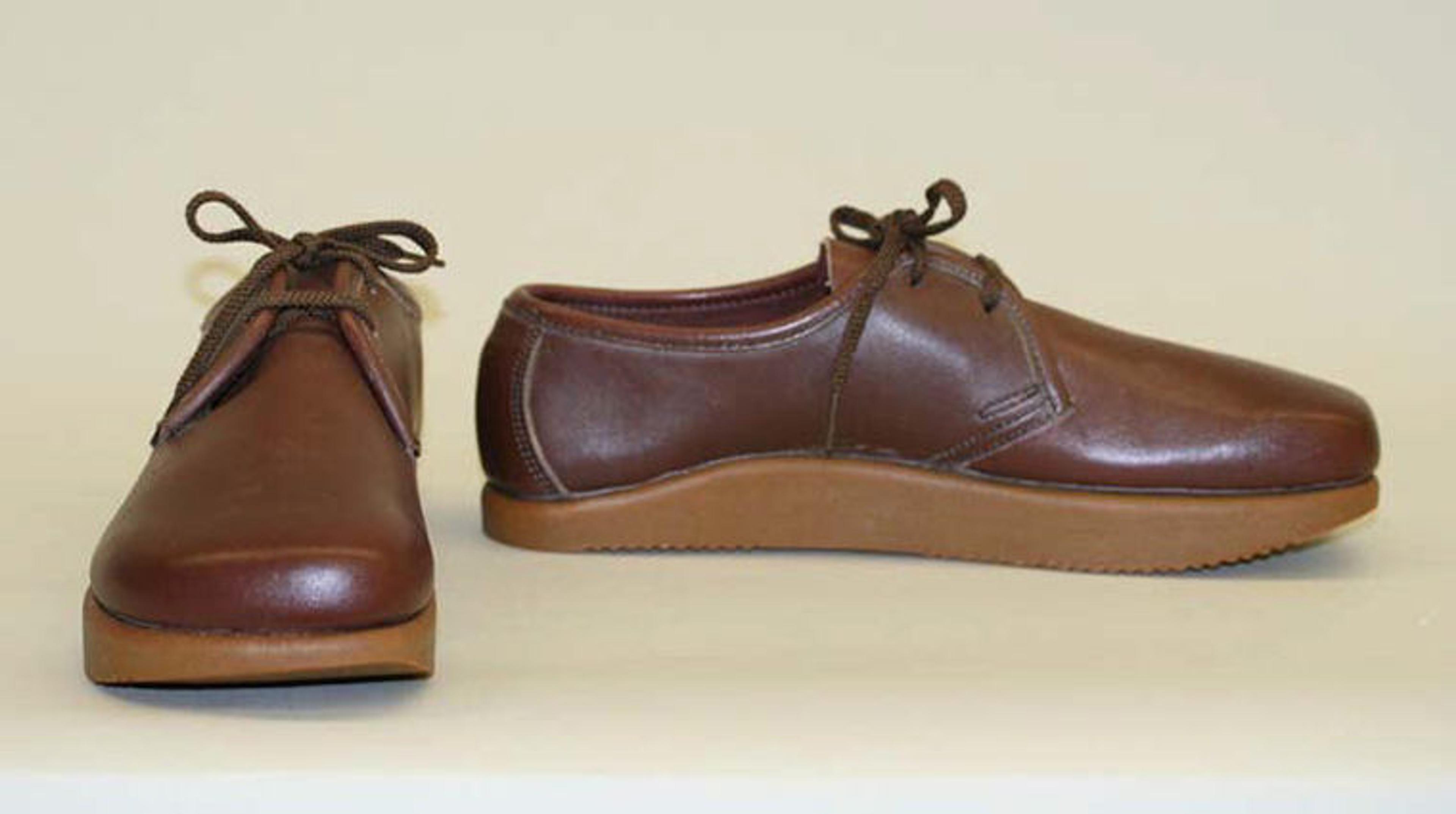
Kalso Earth (R) Shoe. Oxfords, 1960. Leather. The Metropolitan Museum of Art, Gift of Kalso Earth (R) Shoe, 1975. 1975.111a, b)
What we might have initially perceived as unrelated acquisitions now have a shared and enriched story based on the archival records and memories of those who played a critical role in their donation to the Museum. Information on the background of their selection and the mechanics of how they arrived in the Museum's collection adds to our understanding of a specific time period in the design and marketing of men's and women's shoes in New York City, enriching the documentation of these accessories from a recognizable fashion era.
Celia Hartmann
Celia Hartmann is an assistant archivist in the Museum Archives.